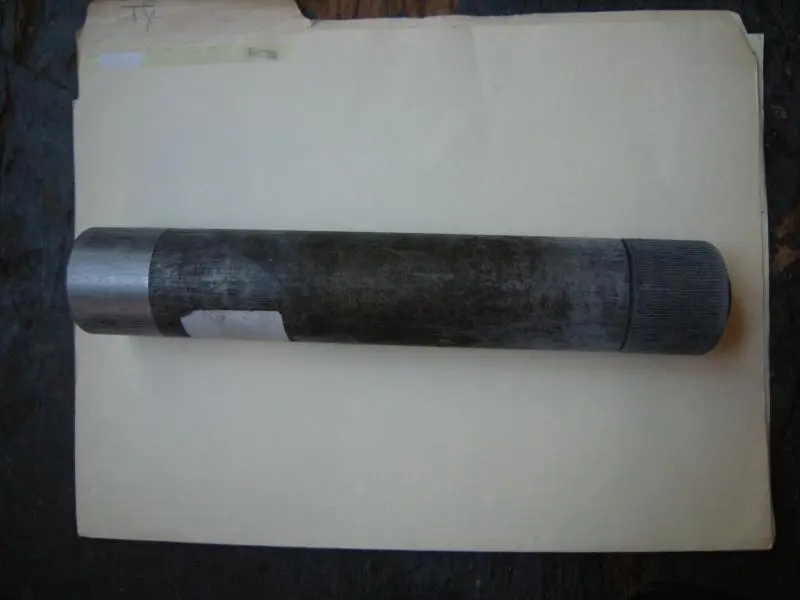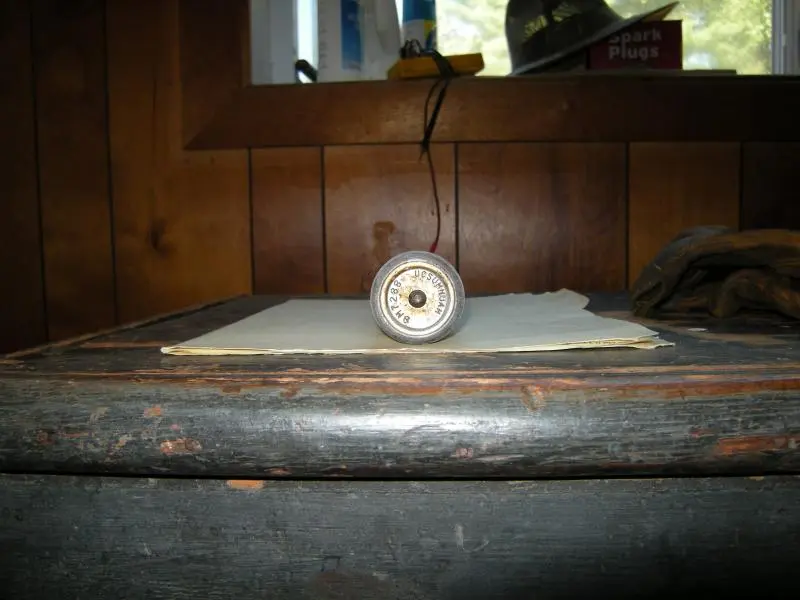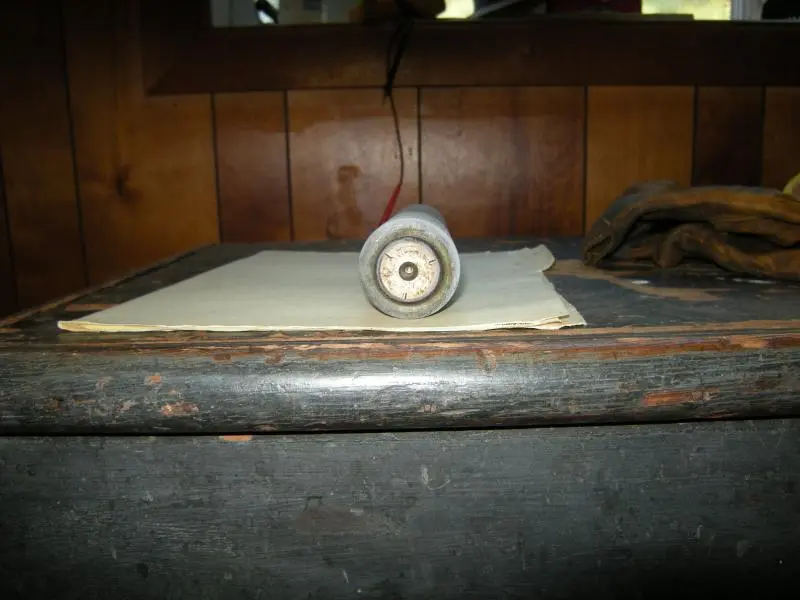I won't comment on the dimples but I will say that I always used STP Engine Treatment to install master pins. That was the best thing I found for that job.
ETA: Some master pins went in so easy that I worried about them coming out but none ever did.
Cool the pins in a freezer, then drive them in.
What I've done is to take a piece of shaft .020 to .030 under the size of the pin, then assemble all the bits, pull the track together and install the slave pin so everything stays in place. Cool the master pin, warm the links a bit and drive the slave pin out with the new master pin.
I've never seen a master pin like you describe with one end grooved. I'd measure both ends and put the smaller end in first. .it's possible that the grooved end might measure slightly larger by a couple of tenths.



OK, just so's you can say you've seen one...
Do you think the 'grooved end' has been knurled?
Daron
Do you think the 'grooved end' has been knurled?
Daron
Hi, if in doubt get a angle grinder and grind a large X on each end of pin. 😆
do you think the groves are to keep it from rotating in the bushing??
Hey, that's a thought. But why would the grooves be any better than a tight interference fit with a smooth machined surface? Since the boss is smooth bore, there would be more surface area to grab if it were smooth too.
In any case, still doesn't solve the "which end" question. Guess I'll get out the caliper tomorrow and take a measurement. If they are the same, I'll just toss it in the air, and whichever end points at the track'll go in first!